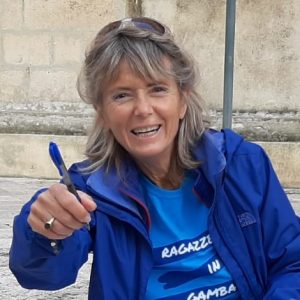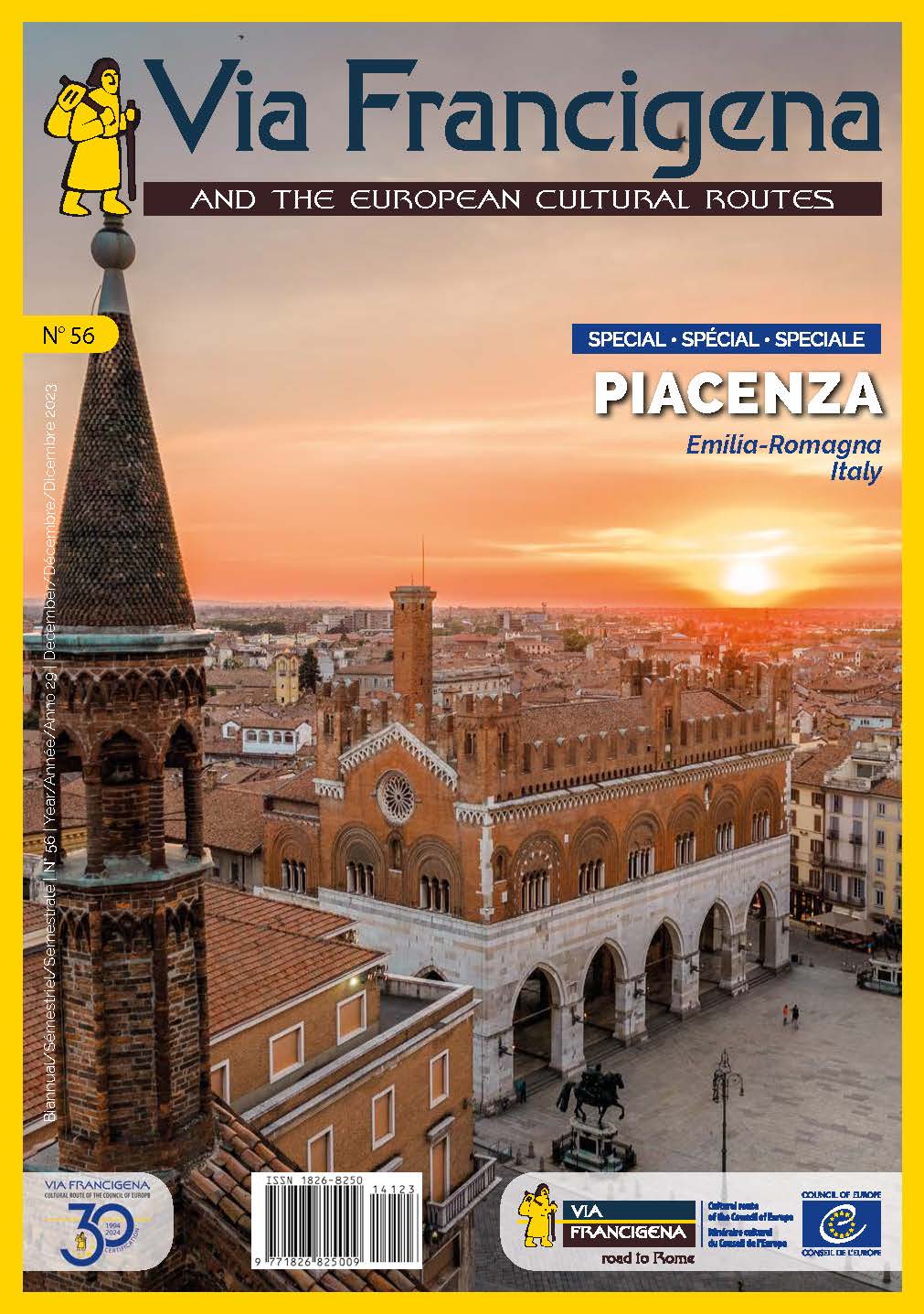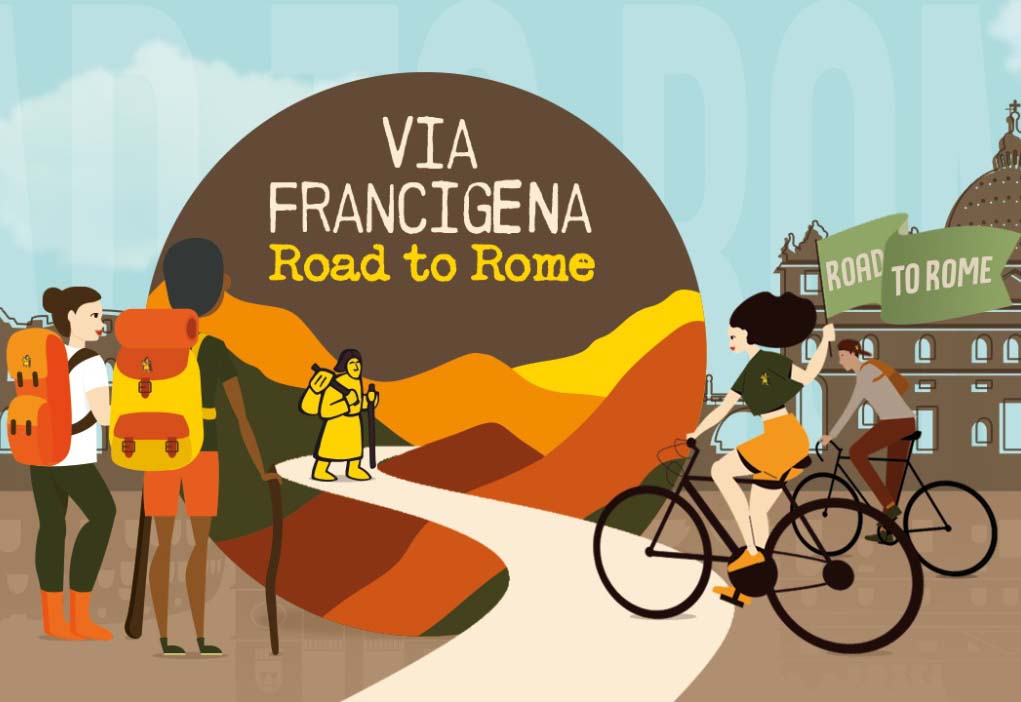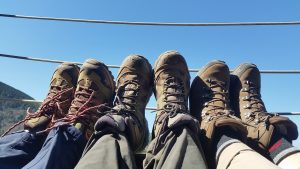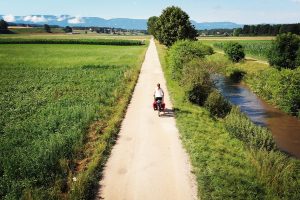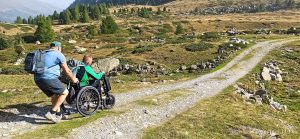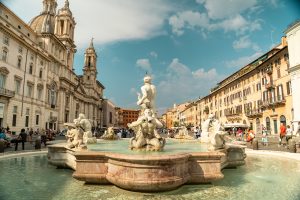In recent years, pilgrimages in Italy have made significant strides. However, the most valuable and meaningful steps have certainly been those towards accessibility and inclusion.
Let’s begin a journey through the people and organizations working in this direction, starting with the story of Dario Sorgato, founder of NoisyVision ETS and tireless promoter of inclusive pilgrimages aimed at integrating people with sensory disabilities and those without.
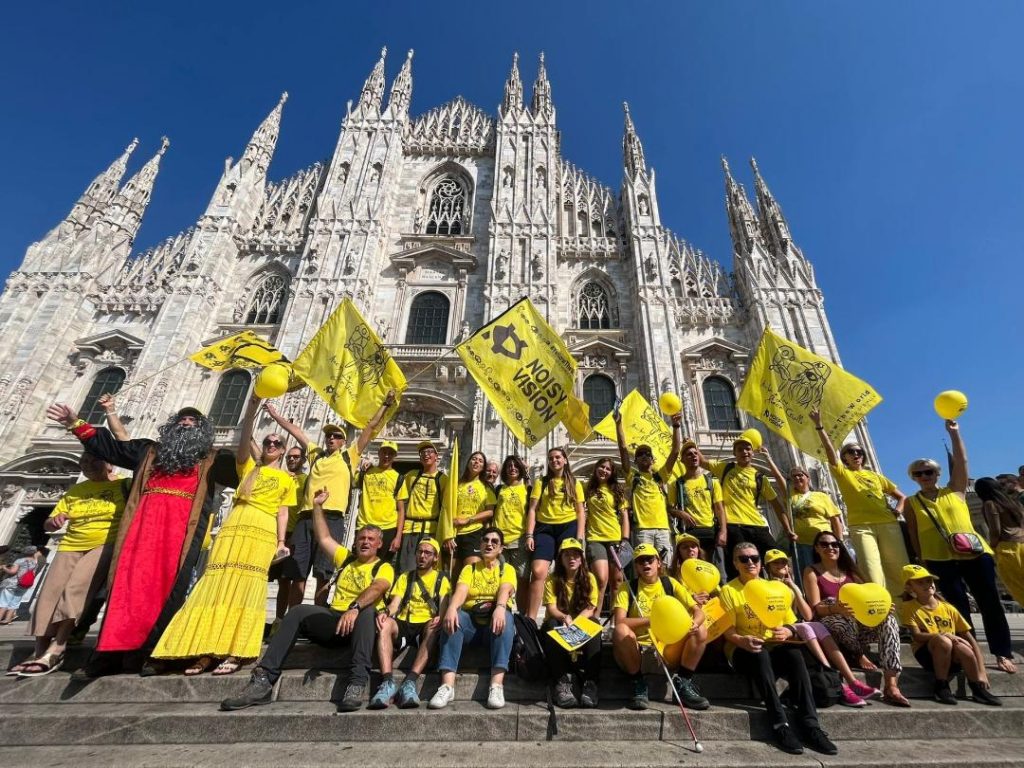
His battle cry is “Yellow the world!”, let’s color the world yellow. Yellow, the color of the sun and joy, is the most visible color, and therefore the color of inclusion. Coincidentally, it’s also the color of the pilgrim symbol of the Via Francigena.
Walking together with people with disabilities opens eyes
Dario’s story is that of a young man who turns the diagnosis of a disease, which is gradually causing him to lose both his sight and hearing, into an incredible drive to live life to the fullest. After traveling the world and collecting experiences that most of us can hardly imagine, he fell in love with slow travel. Since then, he has dedicated much of his considerable energy to creating more opportunities for all by organizing pilgrimages that bring together people with and without disabilities, ultimately improving their lives. By sharing different ways of experiencing the same journey, everyone breaks down their own internal barriers, multiplies emotions and perceptions, opens their hearts and minds, and ends up viewing disability – whether their own or someone else’s – with new eyes.
Stories and pathways of inclusion, from the Sahara to the Francigena
The first inclusive pilgrimage organized by NoisyVision (in collaboration with Appennino Slow) took place in 2016 along the Via degli Dei. Since then, groups have regularly followed this route between Bologna and Florence, and an accessible tourism project has expanded to other routes. These include the Casentino Forests, the Oropa Pilgrimage, the Rota Vicentina, the Sentiero dell’Inglese, the Sahara Desert, and the Via Francigena from Lucca to Rome in three stages.
“Without planning it, we found ourselves walking these stages over three years, between 2021 and 2023,” Dario says. “And alongside new people each year, there was always a core group that returned. Every time, it felt like we had walked the stage the day before, as if our lives hadn’t been apart for a year.”


The Sigerico route is one that Dario holds dear for its variety and richness.
“The Val d’Orcia is like walking through poetry; walking it is unparalleled. There, man has managed to shape nature, making it something in harmony with his image. Many don’t walk the entire Francigena as they do Santiago, probably because it’s best experienced slowly. Reaching Rome on foot is powerful. You feel the strength of those who walked these paths in pilgrimage centuries ago, and this happens more on the Francigena than on other pilgrimages.”
Changing the territory
But there are many other passions and explosive experiences that further broaden the concept of inclusion. In Marsica, people with and without sensory and motor disabilities walk together in the grand project Appennini for All, “Briganti e Inclusivi” (Brigands and Inclusive). This heterogeneous and constantly changing group – up to two hundred participants – joined together for one or more stages, crossing places and villages of the Cammino dei Briganti, sparking incredible involvement from the local communities.
And, even more, “Camminare Oltre” (Walking Beyond), a weekend in the Stelvio National Park, where, alongside Dario, a person with a motor disability, a mountain expert, a hiker, and a ten-year-old child were walking on the trails. But above all, “Anche a Leo piace giallo” (Even Leo Likes Yellow), the first inclusive pilgrimage for teenagers, from Lecco to Milan, along six stages of the Leonardo Trail, identified with the support of the Compagnia dei Cammini. These stages have been, in Dario’s words, “a harsh reality transformed into beauty.”
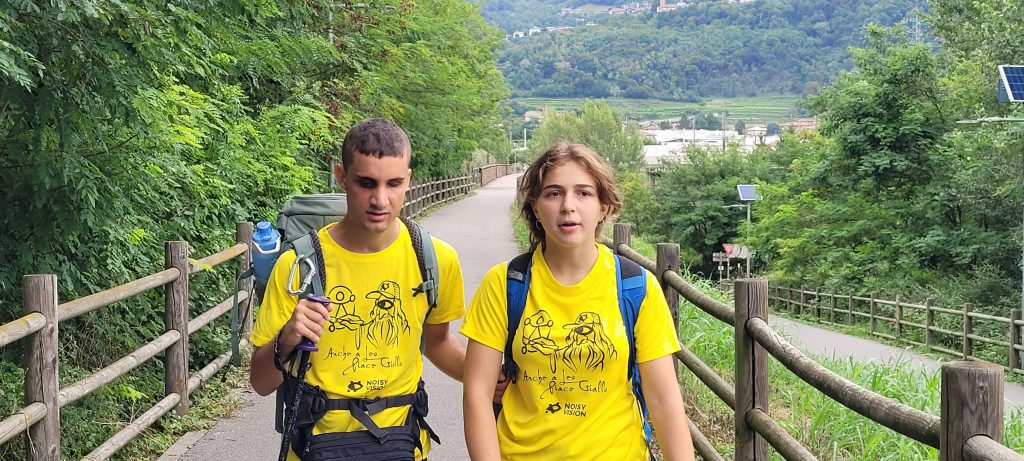
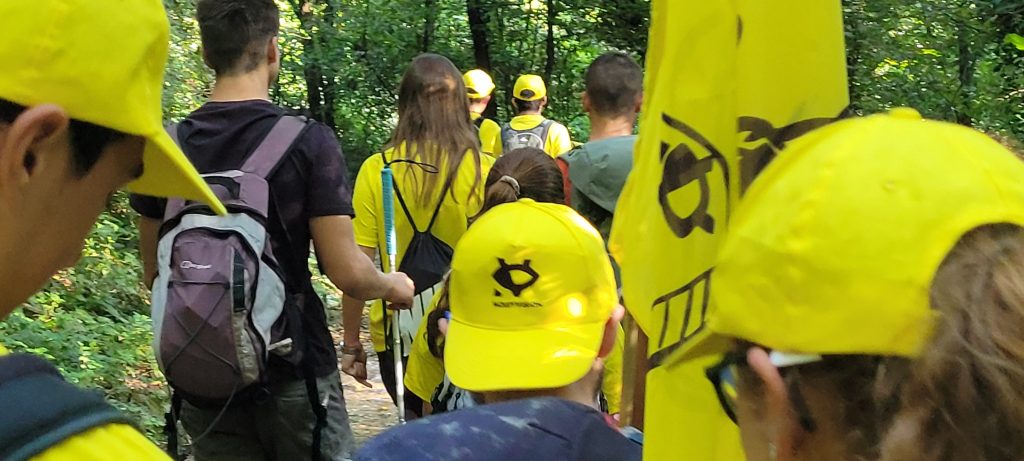
Every time, magic happens. The spontaneous closeness that develops on the pilgrimage breaks down many personal fears, from the fear of not making it to the fear of not knowing how to relate to a person with a disability, only to discover that it’s enough to relate to them as a person. This breakdown of internal barriers – the most necessary kind – opens the way for a flow of shared emotions that remain in the soul, leaving the sense that brotherhood is far more real and achievable. A world that’s more yellow.
“Look where you walk”
Recently, Dario gathered all of this in his book “Guarda dove cammini” (Look Where You Walk), published by Ediciclo Editore. A close friend who has known him for a long time read this book (his fourth) and said, “No matter how much I try, I’ll never truly understand the path you’ve taken.” And indeed, his personal story and what NoisyVision is doing for accessibility and inclusion seem truly unimaginable. But it is real. Understanding part of it is already a lot. Just like the Via Francigena: few will walk the entire route, from Canterbury to Santa Maria di Leuca, but experiencing even just one stage is an unforgettable experience. It’s one that helps you grow and feel good.
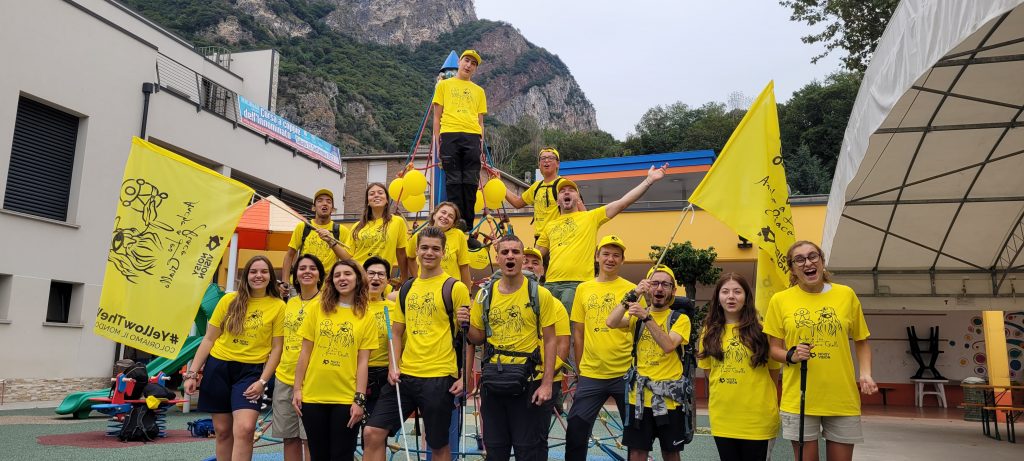
From being condemned to darkness, Dario has become a bearer of light. And this light, above all, is something he wants to share with young people. The experience of “Anche a Leo piace giallo,” captured in an award-winning film that will be featured at the 2025 Trento Film Festival, is being screened in various Italian cities until July (check for dates here).
The key to engaging young people
This type of travel with young people is one that Dario would like to repeat more than any other, because there’s so much to learn mutually.
“I’ve always worked with young people, but I still need a lot of experience myself, to work and walk with them more. The young people I’ve been working with are in that in-between stage, where they still need to gain awareness, to understand that kids who can’t see much can still be friends, that maybe you can go to a club or, indeed, walk a trail together.”
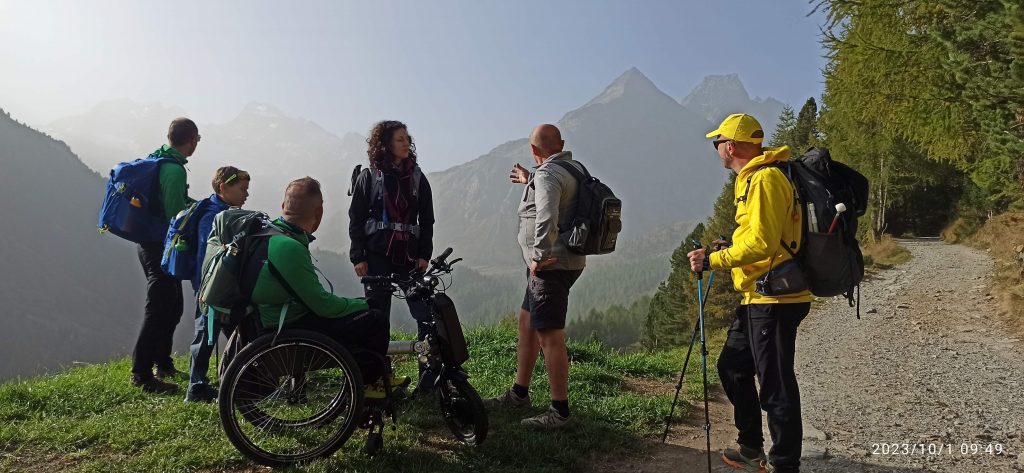

To do this, the power of the pilgrimage is not enough. The spontaneous cohesion that develops must be encouraged; tools like games or themes that help develop dialogue and interaction are needed. NoisyVision knows this well, but they also know that the important thing is to begin because once the mechanism of sharing clicks, a whole new world opens up.
“The hardest part is getting them to join inclusive pilgrimages; a lot of work is needed in communication. I’d like to find the key to getting them curious. I’m even ready to organize a traveling disco, if necessary. It should be something they can’t wait to do.”
From personal experience, Dario knows that once you’ve done an inclusive pilgrimage, you can’t stop; you want to do it again, and as often happens, the hardest part is taking that first step. Or the first pilgrimage. Unfortunately, some proposals don’t reach the required number of participants, but for Dario, just remembering the smiles of parents who saw their children return happy from a pilgrimage they had sent them on with many doubts is enough to fuel his desire to create a more yellow world.
Walking together breaks down barriers
But what must be done to create a more yellow world, to make places and pilgrimages more inclusive and accessible? First of all, Dario says, we need to take “a small but great mental leap: understanding that disability is not a strangeness, avoiding pity, excessive attention, forms of compassion and sadness, all of which are unnecessary.
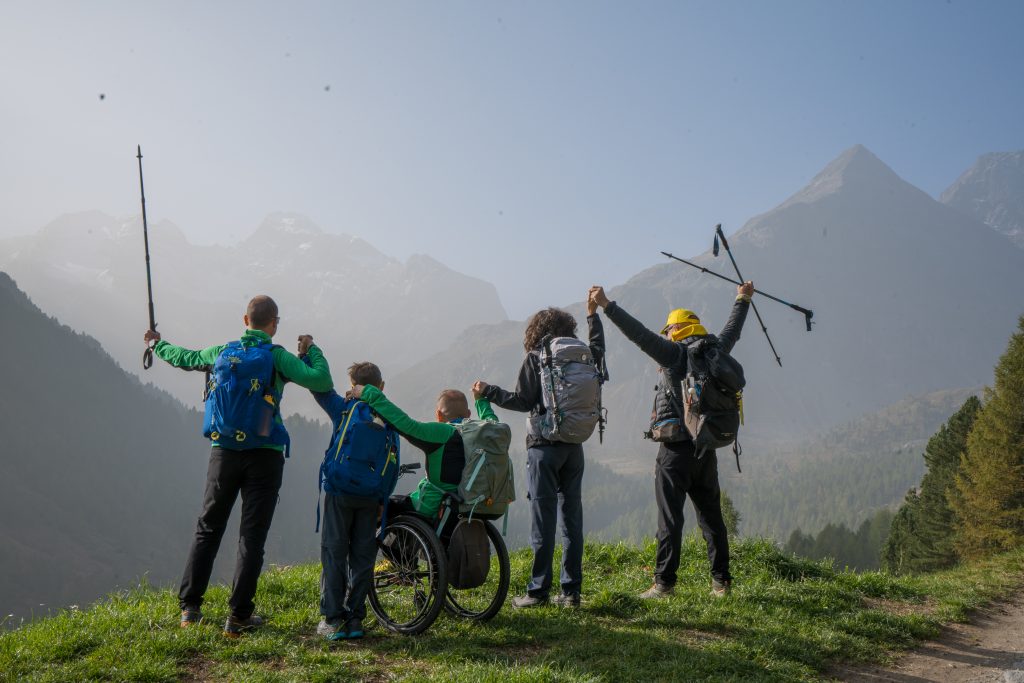
There are many cognitive prejudices toward disabilities, and walking together helps break them down. The work to be done is to continue bringing the lightness that we’ve brought with our groups to the places we’ve crossed with NoisyVision. In the Apennines, between Bologna and Florence, we succeeded. By now, they know us, and when we arrive, they don’t see unfortunate people arriving but people, full stop. We succeeded. We removed the mask of disabilities, and if we succeeded here, we can succeed elsewhere. We just need to keep going.”




